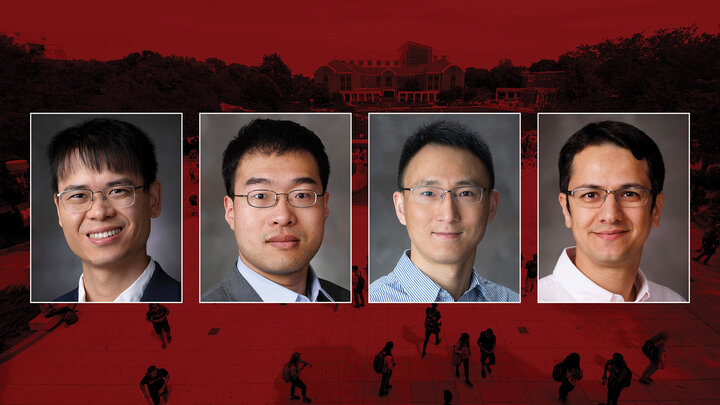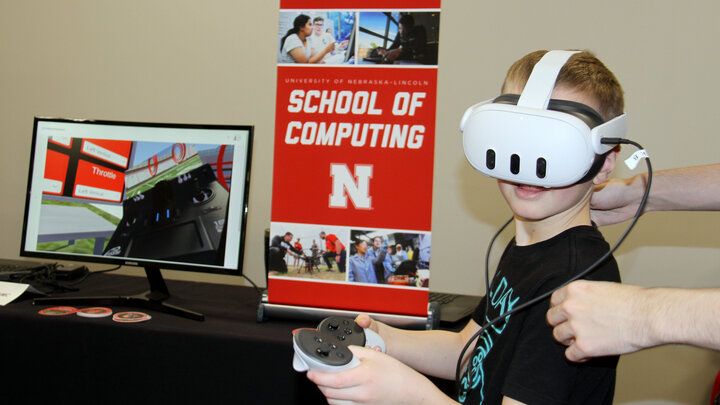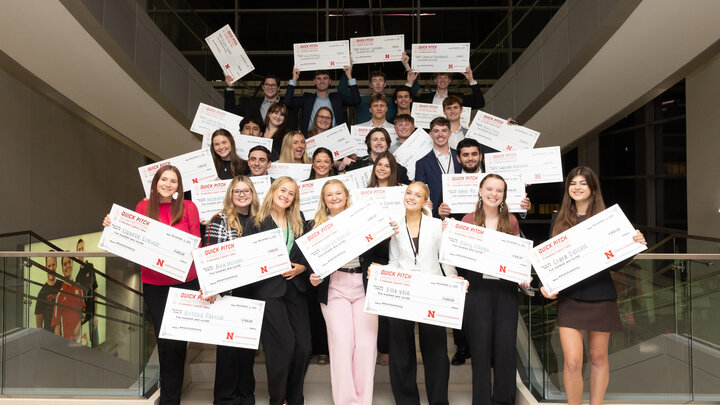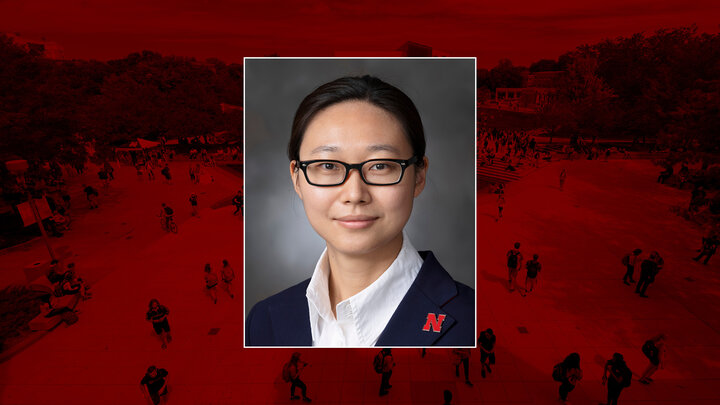A new research initiative at the University of Nebraska–Lincoln is turning precision farming techniques into predictive farming techniques.
With support from the United States Department of Agriculture, School of Computing Assistant Professor Qiang Liu will collaborate on an interdisciplinary project with fellow School of Computing Assistant Professor Hongzhi Guo as well as Professor Yufeng Ge and Associate Professor Saleh Taghvaeian from the Institute of Natural Resources. Together, the team will design, develop, and deploy “CropTwin,” a new digital twin system that will accurately model crop growth to enable smart irrigation management techniques.
“Nebraska can be very dry, and being an agricultural state, water and water management are very important here,” Liu said. “We’re developing these digital twin systems as more cost-effective and efficient solutions, and we’re trying to make them more ubiquitous, so that in the next few years, farmers can actually use them to save water.”
For his part in the project, principal investigator Liu will develop a digital twin, or a dynamic virtual replica of a real-world counterpart that can be used for experimental testing through simulations. Liu has previously developed digital twins for research related to autonomous vehicles and wireless networks, but for this initiative, he’ll create digital twin of a Nebraska farm to simulate crop growth under various irrigation methods and climate scenarios.
While digital twins have been used previously for agricultural research endeavors, most relied solely on simulators that used approximate field measurements or only one data set, resulting in significant model-to-reality gaps and inaccuracies.
“A lot of simulators don't care about what the reality is,” Liu said. “You input some data at the very beginning, then that’s it. It could measure some crop growth, but we want to continuously update the data to improve the fidelity and the synchronicity. Whether it’s every 15 minutes or every day, we’ll get the data and fit it into our digital twin models so we can replicate that reality.”
In order to improve data aggregation methods, Guo will continue work on the development of “AquaCrop,” a multi-sensory Internet of Things platform that will collect and provide accurate real-time field data to the CropTwin system.
“The simulator currently relies on coarse-grained data, which limits its adoption for real-time irrigation management,” Guo said. “This project focuses on enhancing the simulator by developing a platform for collecting fine-grained crop and environmental data.”
AquaCrop will use low-cost, non-destructive sensors, including RGB-D cameras, soil salinity sensors, and weather sensors to continuously aggregate field data. The data will be automatically uploaded to a farm-area network and processed through deep learning models, eliminating the need for manual data entry while also ensuring high accuracy. This data will be used to build a realistic digital twin that will run various simulations of agricultural scenarios and outcomes, while also factoring in other potential environmental factors that could alter results.
By experimenting with a digital field rather than a real one, scientists and farmers can save time, money, labor, and precious natural resources while also reducing waste or risking damage to their crops and land.
“Current methods rely on destructive measurements, like removing plant parts to measure biomass,” Guo said. “Our approach uses cameras and deep learning to estimate crop parameters without harming the plants.”
Based on those crop parameters, the team will design smart irrigation solutions that will improve water conservation and optimize irrigation strategies. Ge and Taghvaeian will provide their agricultural and crop science expertise to ensure the CropTwin technology being developed is relevant and properly deployed in the field.
“This digital twin system will combine the advantage of an existing crop model, real-time crop and soil sensor data, and artificial intelligence for irrigation decision-making,” Ge said. “We hope this new technology will be more accurate in irrigation decision-making than the traditional methods.”
The team will conduct their research at the Spidercam field phenotyping site, which is part of the Eastern Nebraska Research, Extension and Education Center. The site — equipped with state-of-the-art agricultural technologies such as plant and soil sensors, wireless communication technology, and drones — is used to facilitate and support modern digital agriculture research activities at the university. The team will use the site to deploy CropTwin, then evaluate the growth of soybeans under the system and various irrigation methods for a full season.
“In the first year of the project, we want to develop the technologies such as crop and soil sensing, AI-based decision making, and their integration with the existing crop model,” Ge said. “In the second year, we hope the technology will be sufficiently developed and we can test for the soybean crops in the field.”
While this project will focus on primarily streamlining crop irrigation techniques, Liu said he envisions CropTwin being used for a wide variety of other agricultural solutions and purposes in the future, such as monitoring crop growth, insect control, livestock management, and vertical farming assistance. The team also believes the success of the project will help both scientists and farmers enable future use of agricultural digital twins in Nebraska, the Midwest, and beyond.
“Expertise from both sides is really needed to bring this project success,” Ge said. “This project is forward-thinking, and a very cool collaboration between the College of Engineering and the Institute of Natural Resources.”
Liu agreed that not only will the project be impactful in both the technology and agricultural fields, but it will also have a direct effect on the lives of everyday people.
“It’s exciting that we’ll actually be growing soybeans through this project. What we’re doing I could actually have for dinner,” Liu said. “It’s exciting that everything we make for this project will also make an impact on the real world.”




